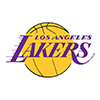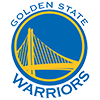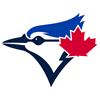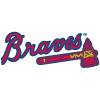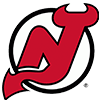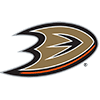The best ball format continues to grow in the fantasy sports world. It's seemingly taken over the offseason in fantasy football, with Underdog Fantasy offering a $10 million fantasy football contest last season with a $2 million top prize and several other providers offering significant prizes. It's similarly growing in MLB with more contests and formats, including a $500K prize pool in Underdog Fantasy's "Dinger" contest ($100K top prize) and a $10K top prize in RTSports' largest contest. A lot has changed since I first wrote a best ball strategy guide in 2020, so here's an updated version.
Here is a breakdown for strategy decisions for four major contest providers with best ball MLB formats: Underdog Fantasy, Best Ball 10s (from Fanball), Fantrax and RT Sports.
If you're not familiar with the best ball format, it's a scoring system that figures out your optimal lineup each week and gives you credit for those points. You draft a starting roster and bench and thereafter there are no free agents, trades or transactions of any kind. You pick your roster and then sit back and watch your stats and standings during the season. The appeal is that you get the enjoyment of the draft without the work of maintaining a roster in a season-long league.
As a result, paid best ball leagues with prizes are becoming the best way to learn the player pool in the preseason. Free mock drafts are great (RotoWire used to own a pioneering draft
The best ball format continues to grow in the fantasy sports world. It's seemingly taken over the offseason in fantasy football, with Underdog Fantasy offering a $10 million fantasy football contest last season with a $2 million top prize and several other providers offering significant prizes. It's similarly growing in MLB with more contests and formats, including a $500K prize pool in Underdog Fantasy's "Dinger" contest ($100K top prize) and a $10K top prize in RTSports' largest contest. A lot has changed since I first wrote a best ball strategy guide in 2020, so here's an updated version.
Here is a breakdown for strategy decisions for four major contest providers with best ball MLB formats: Underdog Fantasy, Best Ball 10s (from Fanball), Fantrax and RT Sports.
If you're not familiar with the best ball format, it's a scoring system that figures out your optimal lineup each week and gives you credit for those points. You draft a starting roster and bench and thereafter there are no free agents, trades or transactions of any kind. You pick your roster and then sit back and watch your stats and standings during the season. The appeal is that you get the enjoyment of the draft without the work of maintaining a roster in a season-long league.
As a result, paid best ball leagues with prizes are becoming the best way to learn the player pool in the preseason. Free mock drafts are great (RotoWire used to own a pioneering draft site called MockDraftCentral.com), but most participants bail on a draft after the first few rounds. With a paid-entry best ball league, every pick matters, and there's nothing better to force you to learn the player pool than when you're on the clock and need to make a decision. (The Best Ball formats in this article also differ from such offerings as the NFBC's Draft Champions or Best Ball Cutline Championship, where there are additional periods where you set your lineups or pick up players. Those are also fun formats and great for preseason research as well, as they often offer deeper player pools.)
While best ball leagues are a great vehicle to learn the player pool and mimic most season-long leagues, there are some key differences to being successful in the format. Since you can't make any transactions, a player's floor becomes much more important than it is in most leagues. A rookie who won't get called up until half way through the season will give you a painful zero for most of the year. A player who could lose their starting job or an injury-prone starter may not be worth the risk in the best ball format.
With that basic strategy tenant out of the way, here are some other key strategy elements for each of the three major best ball contest providers.
Prize Structure
As with all fantasy leagues, the most important step to winning is knowing the rules of your league. Most of the best ball formats are total points. Some best ball games have prize structures that only reward the top finishers, while others reward the top half. A format with half the league finishing in the money makes a safer strategy even more optimal (though best ball already rewards a player's floor). A format with just two top prize finishers likely requires a team to take on more risk.
There are also contests with an overall prize pool. These contests change the strategy of smaller formats. Upside becomes much more important. You can enter up to 150 entries in Underdog Fantasy's "Dinger" contest and add variation to your lineups, similar to how you might approach a multi-entry daily fantasy sports contest. Taking a zero with a top prospect or injury-prone player may be worth taking a shot for that larger risk.
When best ball formats started gaining momentum at the end of the last decade, few, if any contests, featured an overall component. The rise of the overall prize brings to baseball concepts that have become common in football such as stacking teams and looking ahead to the final few weeks for optimal plays in the finals. An MLB team that takes a significant leap with team defense could improve an entire pitching starting staff making their pitchers worth stacking. Taking players from the top of a lineup of a breakout offense could offer correlation similar to daily fantasy contests (ie. a player hits a homer and drives in two of your other players) which may have more impact in a contest with an overall prize.
Position Requirements
A key component to best ball is that since you can't set your lineup, you need to be mindful of having not only a viable starter at each position but a decent backup option at every spot. Each of the three major providers have different starting lineup requirements. Most formats do not require a MI (middle infield) or CR (corner) position like most season-long leagues.
BB10s
Starting Lineup
C - 1
1B - 1
2B - 1
3B - 1
SS - 1
OF - 2
UT - 1
P - 4
20 bench spots
With just four pitchers counting each week, the BB10s place the least amount of emphasis on pitching. A stars-and-scrubs approach on pitching may work, since one or two great pitchers could give you a top-four point producer each week. A larger bench of pitchers with quantity over quality could also work, since only four of your options need great performances in any given week.
Fantrax
Starting Lineup
C - 1
1B - 1
2B - 1
3B - 1
SS – 1
OF – 5
UT - 3
P - 9
UT -3
18 bench spots
Fantrax, unlike the other contests, has limits on your bench spots by position. However, their game also has the deepest rosters with 40 players drafted. It also has limits on the maximum players you can take at each position.
Draft Limit
C - 5
1B - 5
2B - 5
3B - 5
SS - 5
OF - 13
P - 22
RT Sports
RTSports has expanded to three different types of best ball formats. The "Dime" best ball format is a $10 entry and just has league prizes. The Best Ball Baseball Championship is a $20 entry with both league prizes and a $10,000 overall prize. The third contest is the "Draft Masters" points style contest with a $20, $50 or $100 entry fee. All three contests feature the same structure:
Starting Lineup
C - 1
1B - 1
2B - 1
3B - 1
SS – 1
OF – 3
UT - 1
P - 7
10 bench spots
RT Sports has the smallest roster, placing more of an emphasis on quality pitching. If you draft a backup at each hitting position, that leaves just one pitcher on your bench. Positional scarcity is also key. You'll find teams in this format often taking a top-12 second baseman, for example, over an outfielder that ranks much higher in projected total points. With so few bench spots, a player's floor also becomes more important.
RTSports - Draft Masters Rotisserie Style
The "Draft Masters Fantasy Baseball" also features contests with traditional 5x5 categorical scoring. This contest features a slightly different roster format as well. The 5x5 best ball format a good way to prep for your more traditional season-long 5x5 leagues.
Draft Masters Rotisserie Style
C - 2
1B - 1
2B - 1
3B - 1
SS – 1
CI – 1
MI - 1
OF – 5
UT – 2 (any hitter)
P - 9
No bench players.
Underdog Fantasy
Underdog has the simplest format, with just three positions and a point-scoring system that doesn't include saves.
Starting Lineup
IF – 3 (includes 1B, 2B, SS, 3B, C)
OF – 3 (includes most DH types)
P – 3
Flex (IF/OF) – 1
10 bench spots
I've found that outfielders fly off the board early since there are only three starters on each MLB team compared to five starters for the IF slot. For example, 7 of the first 10 picks via Underdog Fantasy ADP (as of Feb. 9) are OF.
The "Dinger" and other Underdog Fantasy contests have an overall prize component that has a playoff structure, unlike most other best ball formats that just add up the total points for the full season.
Round 1 – MLB Best Ball Weeks 1-18
Round 2 – MLB Best Ball Weeks 19-20
Round 3 – MLB Best Ball Weeks 21-22
Round 4 – MLB Best Ball Weeks 23-24
In Underdog's NFL fantasy football contests, many managers focused on finding players in soft Week 17 matchups. Could there be a similar edge in mapping out the final two weeks of the season? It will be much more difficult in baseball, which has rescheduled games and a fluid schedule, unlike the NFL. Still, taking a prospect who may be called up or a player coming back from injury (Bryce Harper or Royce Lewis) could be a difference-maker
Multi-Position Eligibility
A key rule to watch for in best ball formats is multi-position eligibility. If you've played best ball formats for NFL, there's no such thing as multi-position players — you simply figure out your backups and depth at each position (don't forget to take a 2nd or 3rd tight end, for example). In MLB, players regularly qualify at multiple positions. A player with multi-position eligibility in best ball is almost like having an extra player on your bench. For example in the RT Sports format, let's say you draft 9 starting hitters and 6 reserve hitters. That's 15 hitters for 9 starting spots. If five of those hitters are eligible at two positions, that's suddenly like having 20 eligible players for 15 spots. The odds of getting your nine best hitting performances each week into the nine positional slots has dramatically increased.
As a result, I heavily lean toward taking multi-position players whenever possible. After the first two rounds, I find myself boosting the value of multi-position players by several rounds.
Fantrax, however, does not have any multi-position players, and no players can gain additional positional eligibility during the season. As a result, the Fantrax format makes it much more important to make sure you're mindful of not falling behind at a position. Third base in particular is top-heavy this season, for example. Underdog Fantasy also has no multi-position players (Shohei Ohtani is just a hitter).
Here are some key dual- and triple-eligible players to be aware of in the BB10s and RTSports formats. RTSports has more players with multi-eligibility, so any that are different in the RTSports format is noted to the side.
Shohei Ohtani UT / P [P only in RTSports]
Bobby Witt Jr. 3B / SS
Fernando Tatis Jr. SS / OF [SS only in RTSports]
Daulton Varsho C / OF
Tommy Edman 2B / SS
Max Muncy 2B / 3B
Jose Miranda 1B / 3B
Andrew Vaughn 1B / OF
Brandon Drury 1B / 2B / 3B
Jake Cronenworth 1B / 2B
Tommy Edman 2B / SS
MJ Melendez C / OF
Jeff McNeil 2B / OF
Thairo Estrada 2B / SS [ 2B / SS / OF in RTSports]
Josh Rojas 2B / 3B
Luis Arraez 1B / 2B
Luis Urias 2B / 3B / SS
DJ LeMahieu 1B / 2B / 3B
Whit Merrifield 2B / OF
Joey Meneses 1B / OF
Ha-Seong Kim 3B / SS
Seth Brown 1B / OF
Bryson Stott 2B / SS
Gavin Lux 2B / OF [and likely to add SS in season]
Brendan Donovan 2B / 3B / OF [1B / 2B / 3B / OF in RTSports]
Christopher Morel 2B / OF [2B / SS / 3B / OF in RTSports]
Jon Berti 2B / 3B [2B / SS / 3B / OF in RT Sports]
Trey Mancini 1B / OF
Isaac Paredes 1B / 2B / 3B
Wilmer Flores 1B / 2B / 3B
Wil Myers 1B / OF
Chris Taylor 2B / OF
Nick Gordon 2B / OF [2B / SS/ OF in RTSports]
Joey Wendle 2B / 3B / SS
Kyle Farmer 3B / SS
Ramon Urias 2B / 3B
Hunter Dozier 1B / 3B / OF
Aledmys Diaz 2B / OF [2B / SS / 3B / OF in RTSports]
Adam Frazier 2B / OF
Tony Kemp 2B / OF
Bobby Dalbec 1B / 3B
Dylan Moore SS / OF OF [2B / SS / OF in RTSports]
LaMonte Wade Jr. 1B / OF
Brian Anderson 3B / OF
Garrett Hampson SS / OF
Taylor Walls 2B / 3B / SS 3B
David Fletcher 2B / SS
A case could be made that Ohtani should be the first-overall pick in BB10s drafts with his dual eligibility adding another pitcher to a team. Brandon Drury and Brendan Donovan have three-position eligibility, which boosts their value significantly in BB10s. A few players such as Donovan, Christopher Morel and Aledmys Diaz have four-position eligibility at RTSports. Isaac Paredes is a sleeper boosted by his three-position eligibility as well.
Miscellaneous Tips
Variance Is Your Friend
Since the best ball format figures your optimal lineup at the end of the week, you don't need to set a lineup and guess which players will do better. That gives players with higher week-to-week variance hidden value, since they may show up in your starting lineup more often than in a season-long league. For example, players with extreme park factors could be more valuable. You don't need to be clairvoyant on when Colorado pitchers will have good outings at home or combine them with choice road parks such as San Francisco or San Diego. Conversely, San Diego hitters may be slightly more valuable since the weeks they play in Coors may not necessarily be offset by their home games.
Starting Pitchers vs. Closers
All four formats allow you to take relief pitchers. However, I tend to take only starting pitchers since there's so much turnover among closers. Since you can't pick up closers-in-waiting, it's likely better to take only starters and hope several of your pitchers line up for two-start weeks. The counterargument to that, at least for BB10s, is that saves are worth more than wins (eight points vs. six), so if you get a closer that strings together three or four saves in a week, you're getting a massive windfall. As always, know your format. Without points for saves in Underdog Fantasy, I see little value in taking relievers.
Point-Scoring System
Lastly, be sure to check out each format's scoring system, as each has its own quirks. For example, BB10s were created to mimic a 5x5 scoring system, so steals are more valuable (5 points) than they are on Fantrax (3 points) or RT Sports (2 points). Underdog has no points for saves but three points for a quality start. Be especially aware of points for hitter walks and strikeouts. Underdog gives points for walks but doesn't subtract for strikeouts. RTSports gives points for walks but subtracts for strikeouts. BB10s do not give points for walks. As a result, a player who walks a lot like Juan Soto can vary from a top pick to second rounder in each format.
RotoWire has best ball cheatsheets based on each format's scoring system as a quick guide, but be sure to read the rules to see which types of players thrive in each format.
Upload Your Default Rankings
A fairly recent addition to each contest site is that you can upload your own default rankings via .csv. RotoWire's best ball cheatsheets allow you to download a .csv file from RotoWire's projections for each contest site's scoring system. You can then upload the .csv file to each contest site (instructions are on the RotoWire cheatsheet page). You can then manipulate your rankings within each contest platform to your liking. Be warned that RotoWire's projections are just raw point totals and don't account for positional scarcity. You should probably move up some pitchers, for example. I let one Underdog Draft autopick without doing this and drafted only four pitchers total.
All four contest sites have mobile apps, but I'd advise uploading your .csv files and default rankings via a browser on desktop. Then you can make picks and adjust via the mobile apps when you are away from your desk.
This isn't by any means a definitive strategy guide. If you've got some good strategies or tips for how to manipulate your default rankings, let me know in the comments below.








